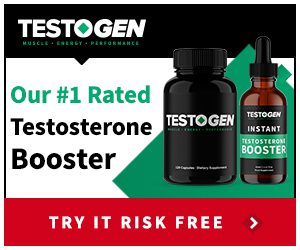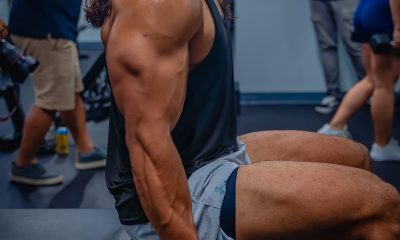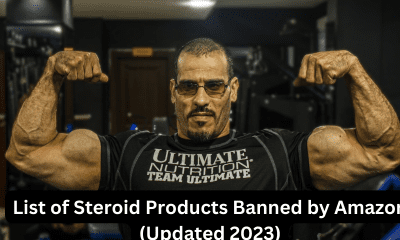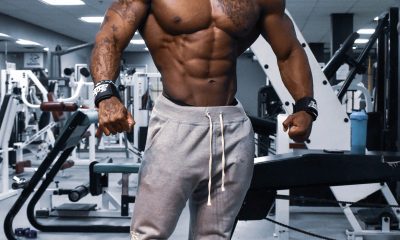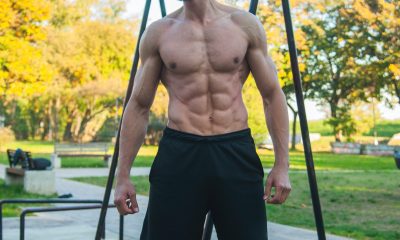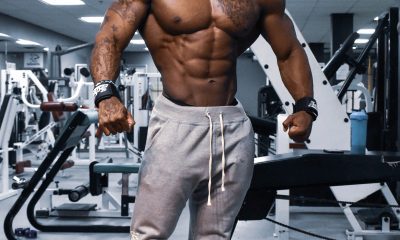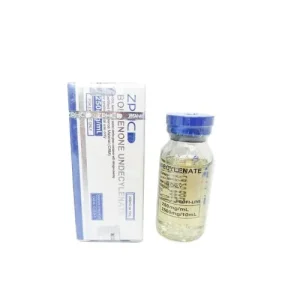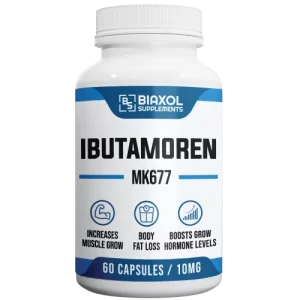Steroids
Half-Lives Of Steroids

How many of you know how long steroids or esters stay in the body after being eliminated from blood? If many, this is great since this is a first and very important signal you know what you do.
But if your knowledge about steroids half-lives is limited to "I've heard something about, but don't have a deep understanding of the subject," it's time to take notes from the slides shared below. Knowing the half-life of steroids, you are about to use helps to design a proper cycle and begin the PCT on time. You will see when you are "clean" after the last dosage enters the body, which is tremendously important for trainees participating in competitions.
Read More: Gynecomastia and Bodybuilding
So analyze the slide and get detailed info on half of the most popular steroids, esters, and ancillaries.
Understanding Half-Lives of Different Steroids
Are you ready for the next cycle? Bookmark this image for easy access next time if you are unsure which steroids to pick up. The perspective of how long they would be detected in your body.
Steroids, also known as corticosteroids or anabolic steroids, have varying half-lives depending on their type and formulation. The half-life of a drug refers to the time it takes for half of the drug to be eliminated from the body. Here are some common steroids and their approximate half-lives:
-
Oral Corticosteroids:
- Prednisone: Approximately 2 to 4 hours.
- Prednisolone: About 2 to 4 hours.
- Dexamethasone: Longer-acting, with a half-life of 36 to 54 hours.
-
Injectable Corticosteroids:
- Triamcinolone: Has a longer half-life than oral steroids, usually lasting several weeks.
-
Topical Corticosteroids:
- The half-life of topical steroids can vary depending on the specific formulation, but they generally have a shorter half-life than oral or injectable forms.
-
Anabolic Steroids:
- Anabolic steroids like testosterone can have varying half-lives depending on the compound and ester attached. For example, testosterone cypionate has a half-life of about 8 days, while testosterone propionate has a much shorter half-life of about 2 days.
Short-Acting Steroids
Shorter half-lives mean the substance is metabolized and cleared from the body more rapidly. Here are some steroids with relatively short half-lives:
Dianabol (Methandrostenolone): Dianabol is a popular oral steroid with a short half-life. It's known for its rapid muscle-building effects but requires more frequent dosing.
Anadrol (Oxymetholone): Anadrol is another oral steroid that provides quick gains but has a relatively short half-life compared to some long-acting options.
Winstrol (Stanozolol): Winstrol is available in oral and injectable forms and has a moderate half-life. It's often used for cutting cycles.
Cortisone: Cortisone has a short half-life of about 1.25 hours. It is a corticosteroid commonly used for its anti-inflammatory properties.
Hydrocortisone: Hydrocortisone, another corticosteroid, has a half-life of about 8-12 hours. It is used to treat various conditions, including allergic reactions and inflammation.
Prednisone: Prednisone, a synthetic corticosteroid, has a half-life of about 2-4 hours. It's often prescribed for its anti-inflammatory and immunosuppressive effects.
Methylprednisolone: Methylprednisolone, another synthetic corticosteroid, has a half-life of around 18-36 hours. It's used for various inflammatory and autoimmune conditions.
Dexamethasone: Dexamethasone, a synthetic corticosteroid, has a half-life of about 36-72 hours. It's used for its potent anti-inflammatory and immunosuppressive effects.
Long-Acting Steroids
Some common long-acting steroids include:
Dexamethasone
Dexamethasone is a synthetic corticosteroid with anti-inflammatory and immunosuppressive properties. It is available in both short-acting and long-acting forms. Long-acting dexamethasone preparations are used in conditions like allergic disorders, rheumatoid arthritis, and certain respiratory diseases.
Triamcinolone
Triamcinolone is another synthetic corticosteroid with a long-acting formulation. It treats various inflammatory conditions, including dermatological disorders, joint inflammation, and allergies.
Methylprednisolone
Methylprednisolone is a corticosteroid medication in both short-acting and long-acting forms. When prolonged treatment is required, the long-acting version may be used for conditions like asthma, allergic reactions, and autoimmune diseases.
Betamethasone
Betamethasone is a potent corticosteroid available in various formulations, including long-acting preparations. It is used for severe dermatological conditions, joint inflammation, and certain autoimmune diseases.
Deca-Durabolin (Nandrolone Decanoate)
Deca-Durabolin is an injectable steroid with a long half-life, allowing for less frequent injections. It's known for promoting significant muscle growth and joint health.
Equipoise (Boldenone Undecylenate)
It is an injectable steroid with a long half-life. It's used for lean muscle gains and improved endurance.
Testosterone Enanthate and Testosterone Cypionate
They are long-acting injectable testosterone esters commonly used in hormone replacement therapy (HRT) and bodybuilding. They have a longer half-life compared to other testosterone forms.
Why Steroid Half Lives Matter to Every Bodybuilder
Knowing a steroid's half-life is important for several reasons, especially in the context of medical treatment and athletic performance enhancement. Here are some of the key reasons why understanding a steroid's half-life is significant:
-
Dosing Frequency
The half-life of a steroid helps determine how often it needs to be administered. Shorter half-lives require more frequent dosing, while longer half-lives necessitate less frequent administration. This information is crucial for ensuring the steroid's effectiveness in achieving the desired therapeutic or performance-enhancing effects.
-
Steady Blood Levels
Knowing the half-life helps maintain steady blood levels of the steroid. Consistency in drug levels is essential for achieving consistent therapeutic outcomes or performance enhancement. If a steroid with a short half-life is not taken at the right intervals, there can be fluctuations in drug concentration, potentially leading to suboptimal effects or side effects.
-
Minimizing Side Effects
Understanding the half-life can help minimize the risk of side effects. Steroids with shorter half-lives may result in more rapid fluctuations in hormone levels, increasing the likelihood of side effects like mood swings, acne, and hormonal imbalances. Proper dosing and timing can help mitigate these risks.
-
Tapering Off
Knowing the half-life is critical when discontinuing the medication for individuals who have been using steroids for medical purposes. A gradual tapering-off regimen can be designed based on the half-life to reduce the risk of withdrawal symptoms or a sudden return of symptoms.
-
Detectability in Drug Tests
Athletes must be aware of a steroid's half-life in sports and competitive settings because it affects how long the substance can be detected in their system. Steroids with longer half-lives may remain detectable for an extended period, increasing the risk of failing drug tests and facing sanctions.
-
Optimizing Performance Enhancement
Athletes and bodybuilders may use steroids to enhance performance. Knowledge of the half-life helps them time their doses to coincide with training and competition schedules, maximizing the potential benefits while minimizing the risk of being tested positive for banned substances.
-
Safety and Efficacy
In medical contexts, understanding the half-life of a steroid is crucial for ensuring both safety and efficacy. Healthcare providers must tailor dosing regimens to match a patient's specific needs, which requires a good understanding of how long the drug remains active in the body.
-
Drug Interactions
The half-life of a steroid can influence potential drug interactions. Drugs that affect the metabolism or elimination of steroids can alter their half-life, potentially leading to unexpected effects or side effects. Healthcare providers need this information to make informed decisions about drug combinations.
Knowing a steroid's half-life is vital for effective and safe use, whether for medical treatment or performance enhancement. It informs dosing regimens, helps manage side effects, and ensures that the drug remains within acceptable levels in the body. However, it's essential to use steroids only under the guidance of a healthcare professional and in compliance with applicable laws and regulations.
Measuring Half-Lives of Steroids
Measuring the half-life of a steroid involves determining the time it takes for half of the substance to be eliminated from the body or lose its pharmacological activity. The half-life of a steroid can vary depending on the specific steroid compound, its administration route, and individual factors such as metabolism and clearance rate. Here's a general guide on how to measure a steroid's half-life:
-
Select the Steroid
Choose the specific steroid compound you want to measure the half-life of. Keep in mind that different steroids may have different half-lives.
-
Obtain the Steroid:
Acquire a known quantity of the steroid in question. It's crucial to have a precise and pure sample.
-
Administer the Steroid
Administer the steroid to a subject or experimental model. The method of administration may vary depending on the steroid, but common routes include oral ingestion, injection, or transdermal application.
-
Sample Collection
Collect blood or urine samples at specific time intervals after administration. The frequency of sampling depends on the expected half-life of the steroid. Sampling should continue until the steroid is no longer detectable or has dropped significantly in concentration.
-
Analytical Techniques
Use analytical techniques such as high-performance liquid chromatography (HPLC), gas chromatography-mass spectrometry (GC-MS), or liquid chromatography-mass spectrometry (LC-MS) to quantify the steroid concentration in the collected samples. These techniques allow for accurate measurement of the steroid's presence and concentration.
-
Data Analysis
Plot a graph of steroid concentration versus time. The half-life can be estimated by identifying the point at which the concentration has decreased by 50% from its peak value. This is usually done by drawing a line from the peak concentration to the x-axis (time) and finding the time at which it intersects the 50% concentration level.
-
Repeat and Validate
To ensure accuracy, repeat the experiment with multiple subjects or samples. Statistical analysis can help validate the results and estimate the steroid's half-life more accurately.
-
Consider Individual Variability
Remember that individual factors, such as metabolism, age, and overall health, can influence the elimination of steroids from the body. Therefore, the half-life measured in a controlled experiment may not perfectly represent an individual's response.
-
Interpret the Results
Once you have determined the half-life, you can use this information for dosing and timing of administration in clinical or athletic settings. It's important to understand the pharmacokinetics of the specific steroid to optimize its effects and minimize side effects.
Please note that measuring the half-life of a steroid can be a complex and resource-intensive process, often requiring specialized equipment and expertise. Additionally, ethical and legal considerations must be considered when conducting experiments involving steroids, especially in human subjects. Always consult with relevant authorities and experts to ensure compliance with regulations and ethical standards.
Overall
The half-life of a steroid can vary from person to person depending on factors like metabolism and individual physiology. It's important to note that the half-life of a steroid can influence its dosing schedule. Shorter-acting steroids may require more frequent dosing while longer-acting steroids can be administered less often.
A healthcare professional should determine the choice of steroid and its dosing regimen based on the specific medical condition being treated. Get quality steroids from etalaze.biz for your fitness needs and experience the magic.
Bodybuilding
Optimizing Strength and Recovery: A Guide to Bodybuilding by Body Type
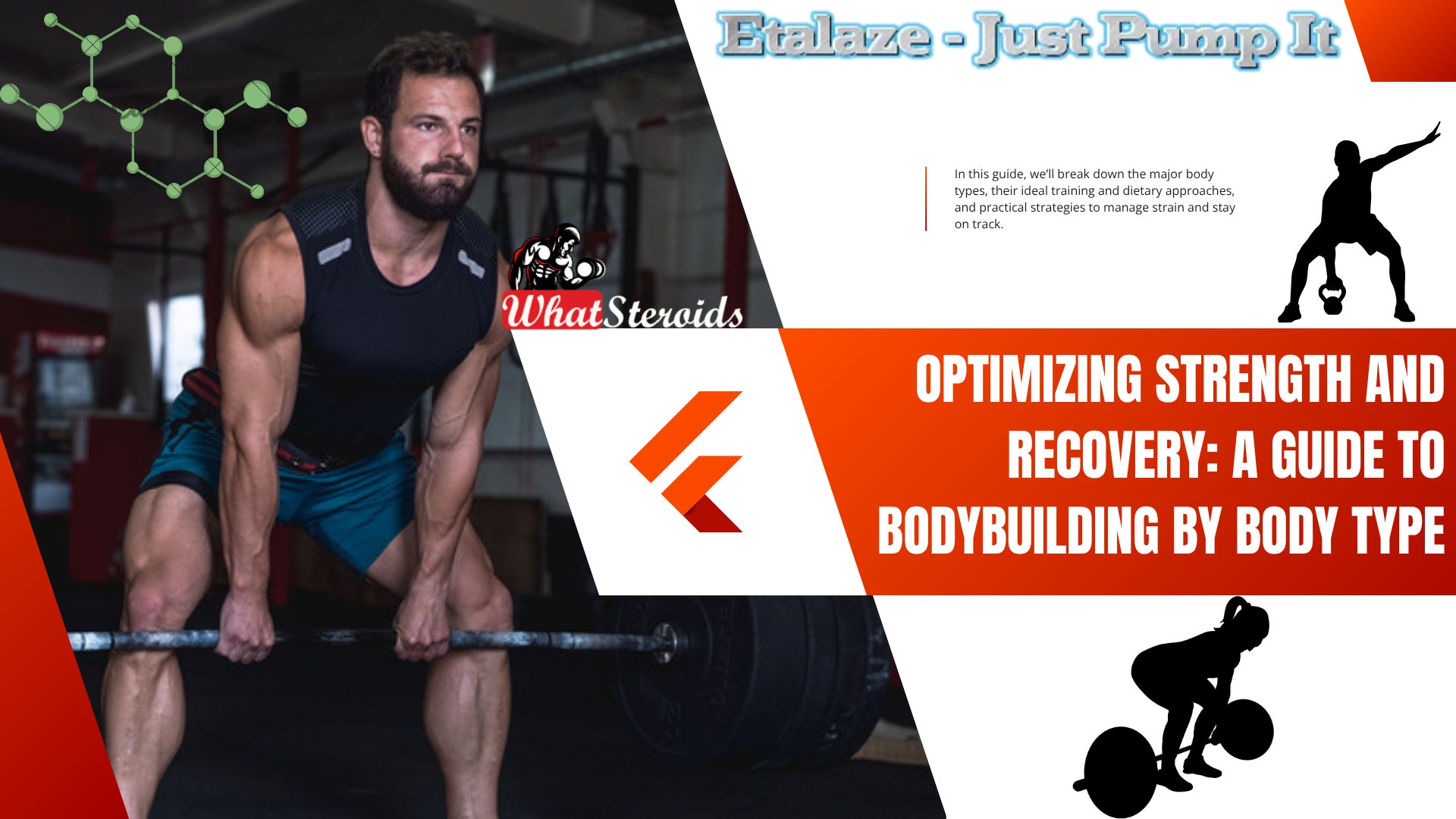
Every body tells a different story—and in bodybuilding, honoring that story is the key to maximizing results. From ectomorphs struggling to pack on mass to endomorphs battling fat retention, training smart means training for your body’s natural tendencies. In this guide, we’ll break down the major body types, their ideal training and dietary approaches, and practical strategies to manage strain and stay on track.
Understanding Your Somatotype
Most people fall somewhere on a spectrum between three classic body types:
1. Ectomorph
Traits: Naturally thin, with a fast metabolism. Gains muscle and fat with difficulty.
Strength Training: Emphasize compound lifts—deadlifts, squats, and presses—with low volume and high intensity. Stick to 3–4 workouts weekly with longer rest intervals.
Reps/Sets: 4–6 reps for 3–5 sets focusing on progressive overload.
Diet: Maintain a high-calorie surplus (15–20% above maintenance) with 50% carbs, 30% protein, and 20% fat. Opt for 5–6 meals daily to maintain an anabolic environment.
Buy Cut Long 300 By Ultima Pharmaceuticals
Recovery Protocol:
Prioritize rest and nutrient-dense intake.
Incorporate creatine, omega-3s, and magnesium.
Minimize cardio to avoid catabolic activity.
2. Mesomorph
Traits: Naturally muscular, moderate metabolism, easily gains muscle.
Strength Training: A hybrid approach with both compound and isolation movements. Train 4–5 times a week.
Reps/Sets: 6–12 reps over 3–4 sets. Include both strength and hypertrophy phases.
Diet: Stay close to maintenance or slight surplus, depending on goal. Use a 40:30:30 macro split (carbs:protein:fat).
Recovery Protocol:
Utilize active recovery days (light cardio, swimming, mobility work).
Schedule deload weeks every 4–6 weeks.
Use massage therapy and contrast showers to reduce soreness.
3. Endomorph
Traits: Broad build, slower metabolism, gains fat easily but also builds strength well.
Strength Training: Opt for metabolic conditioning—supersets, circuits, and high-volume compound lifts. Include 5–6 training sessions per week.
Reps/Sets: 8–15 reps, 3–5 sets to maximize fat oxidation.
Diet: Use a clean-calorie deficit or careful maintenance. Ideal macros: 35% protein, 30% carbs, 35% fat. Emphasize carbs in the morning or post-workout only.
Must Read: Exploring BPC-157 Healing Properties
Recovery Protocol:
Include daily mobility drills and foam rolling.
Use anti-inflammatory nutrients like turmeric, ginger, and omega-3s.
Consider joint support like glucosamine or collagen peptides.
Universal Strategies to Overcome Strain and Fatigue
No matter your build, strain management is key to sustainable progress. Here’s how to recover smarter:
1. Prioritize Quality Sleep
Aim for 7–9 hours of uninterrupted sleep to support hormone regulation and tissue repair.
2. Fuel Recovery with Smart Nutrition
Protein: 1.6–2.2 g/kg body weight daily.
Stay hydrated: Water facilitates nutrient transport and reduces cramping.
Use strategic supplements: Creatine, BCAAs, vitamin D, and magnesium glycinate improve muscle repair and systemic recovery.
3. Use Active Recovery Wisely
Incorporate light movement (e.g., walking, swimming), yoga, or mobility drills to boost blood flow and flexibility.
RICE for Acute Strain
Rest, Ice, Compression, and Elevation—particularly useful within 48 hours of a minor injury.
5. Manage Stress with Breath and Mindfulness
High cortisol impedes recovery. Daily deep breathing, meditation, or cold showers can regulate the nervous system.
Steroid Use by Body Type
Bodybuilders often tailor their choices based on their body type, goals, and tolerance to side effects. Here's a breakdown of commonly used anabolic steroids and how they align with different somatotypes.
Ectomorphs (Hardgainers)
Goal: Maximize muscle mass and strength with minimal fat gain.
Common Steroids:
Dianabol (Methandrostenolone): Rapid mass gain, water retention helps joint support.
Testosterone Enanthate or Cypionate: Foundational for bulking cycles.
Deca-Durabolin (Nandrolone): Promotes joint health and lean mass.
Stacking Strategy: Testosterone + Dianabol + Deca for a classic bulking cycle.
Risks: Estrogenic side effects (bloating, gynecomastia), liver strain (oral compounds).
Buy Boldenone Undecylenate 250mg/ml by ZPHC
Mesomorphs (Naturally Muscular)
Goal: Enhance muscle definition, strength, and vascularity.
Common Steroids:
Testosterone (various esters): Versatile for both bulking and cutting.
Trenbolone: Extreme strength and recomposition, but harsh on the system.
Winstrol (Stanozolol): Hardens muscles and reduces water retention.
Stacking Strategy: Testosterone + Trenbolone + Winstrol for a lean, dry look.
Risks: Cardiovascular strain, aggression, liver toxicity (Winstrol)2.
Endomorphs (Prone to Fat Gain)
Goal: Cut fat while preserving lean mass.
Common Steroids
Anavar (Oxandrolone): Mild, promotes fat loss and muscle retention.
Winstrol: Enhances definition and vascularity.
Masteron (Drostanolone): Anti-estrogenic, ideal for cutting cycles.
Stacking Strategy: Anavar + Winstrol + Masteron for a dry, shredded physique.
Risks: Joint dryness, cholesterol imbalance, androgenic effects.
Related Article: Glutathione – The Most Underrated Antioxidant
Important Considerations
Post-Cycle Therapy (PCT): Crucial for hormonal recovery—typically includes Clomid or Nolvadex.
Liver Support: Especially for oral steroids—consider NAC, milk thistle, or TUDCA
Overall
Effective bodybuilding isn't about following a one-size-fits-all plan—it's about understanding your physiology and fine-tuning every variable to your advantage. Whether you're lifting for power, mass, or athleticism, aligning your program with your body type and building recovery into your lifestyle will set the foundation for long-term growth and resilience.
Bodybuilding
Fitness Lessons from A Navy Seal’s Training Routine
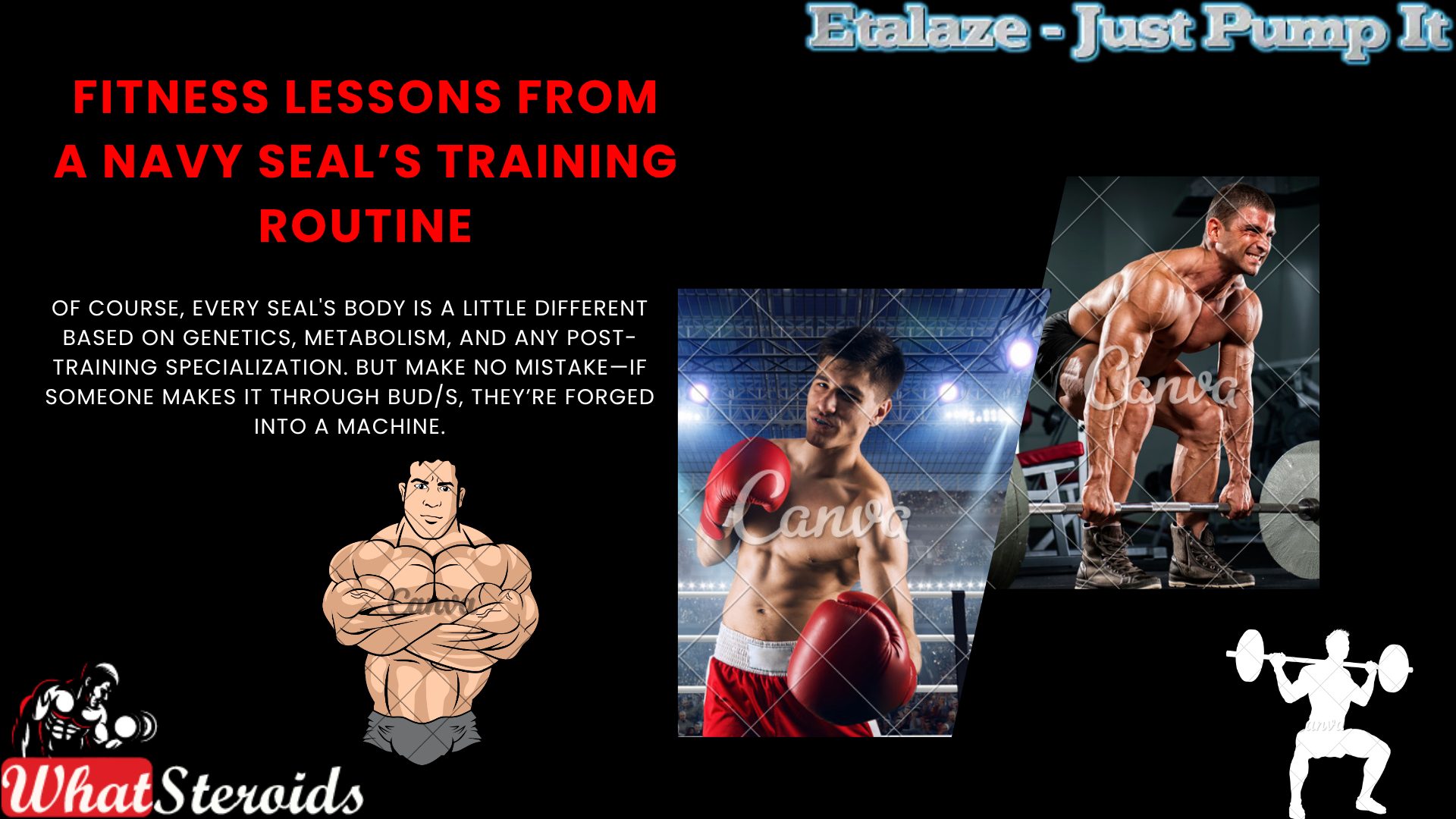
Navy SEAL training is designed to forge elite tactical athletes. It’s not your average gym program; it’s a brutal blend of strength, endurance, agility, and mental resilience training that sculpts a body to handle anything from long swims and ruck marches to hand-to-hand combat.
Physically, SEAL candidates go through:
- High-rep bodyweight training (push-ups, pull-ups, sit-ups)
- Running and rucking (often with weighted gear)
- Swimming and water confidence drills
- Weight training that builds functional strength, not just aesthetics
The result? SEALs tend to develop lean, muscular, and highly conditioned physiques. Not necessarily like bodybuilders—but more like Olympic decathletes: built for performance, with a low body fat percentage and exceptional cardiovascular fitness.
Of course, every SEAL's body is a little different based on genetics, metabolism, and any post-training specialization. But make no mistake—if someone makes it through BUD/S, they’re forged into a machine.
Click Here to Buy Ibutamoren MK677 by Biaxol
Weekly Navy SEAL Training Protocol (Pre-BUD/S Phase)
1. Cardiovascular Conditioning
2 Long Slow Distance (LSD) sessions: One run, one swim. These build aerobic endurance (e.g., 4–6 miles running, 1,000–2,000 meters swimming).
1 Long Interval session: Alternating fast-paced efforts with recovery (e.g., 4×800m run or swim intervals).
1 Short Interval session: High-intensity bursts (e.g., 10×100m sprints or swim sprints).
Must Read: A Proper Approach to Buying Steroids Online
2. Strength & Calisthenics
2 Full-body strength sessions: Focus on compound lifts (deadlifts, squats, presses) and injury prevention.
4–5 Calisthenics routines: High-rep push-ups, pull-ups, sit-ups, dips, flutter kicks—often circuit-style.
3. Core & Mobility
4–5 Core sessions: Planks, leg raises, Russian twists, and dynamic trunk work.
Daily flexibility/mobility work: Stretching, foam rolling, and joint prep to stay injury-free.
4. Water Confidence & Skills
2–3 swim sessions: Including side-stroke technique, underwater swims, and drown-proofing drills.
Treading water, buddy breathing, gear retrieval: Builds calm under pressure.
5. Mental Toughness & Recovery
Cold exposure, sleep deprivation drills, and team-based challenges: Simulate stress and build grit.
Active recovery days: Light cardio, yoga, or hiking to promote recovery without stagnation.
This structure is scalable—candidates ramp up intensity over 26 weeks to prepare for BUD/S. It’s not about looking jacked; it’s about being unbreakable.
Diet and Nutrition Framework
Navy SEALs follow a strategic, performance-driven diet that fuels their extreme physical and mental demands. It’s not a trendy meal plan—it’s a calculated system built around macronutrient balance, nutrient timing, and whole-food quality.
Here’s a breakdown of their typical daily and weekly dietary structure based on SEAL prep guides and military nutrition protocols2:
Daily Nutrition Framework
Calories: 3,000–3,500 kcal/day (adjusted for training intensity and body size)
Macronutrient Split
50% Carbohydrates – for sustained energy
30% Protein – for muscle repair and immune support
20% Fats – for hormone balance and long-term fuel
Meal Timing
Pre-workout: Complex carbs + moderate protein (e.g., oatmeal + eggs)
Post-workout: Fast-digesting carbs + lean protein (e.g., banana + whey shake)
Every 3–4 hours: Balanced meals to maintain energy and recovery.
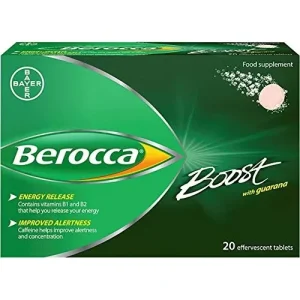 Check out Berocca Performance [15 effervescent tablets]
Check out Berocca Performance [15 effervescent tablets]
Weekly Meal Plan Table
| Day | Breakfast | Lunch | Dinner | Snacks/Post-Workout |
| Monday | Oats + berries+ eggs | Grilled chicken + quinoa + spinach | Salmon+ sweet potato + broccoli | Greek yogurt + almonds |
| Tuesday | Whole grain toast + avocado + eggs | Turkey wrap + humnus + carrots | Beef stir-fry + brown rice + kale | Protein shake + banana |
| Wednesday | Smoothie (banana, whey, oats) | Tuna salad + whole grain crackers | Chicken breast + lentils + asparagus | Cottage cheese + walnuts |
| Thursday | Scrambled eggs + sweet potato | Lentil soup + whole grain | bread + grilled fish + couscous + mixed greens | Hard-boiled eggs + apple |
| Friday | Greek yoghurt + granola + berries | Chicken burrito bowl (rice, beans) | Pork loin + roasted veggies + quinoa quinoa | Protein bar + orange |
| Saturday | Pancakes (oat flour) + eggs | Shrimp + brown rice + avocado | Turkey meatballs + spaghetti squash | Trail mix + kefir |
| Sunday | Omelet + Whole grain toast | Grilled tofu + Wild rice + veggies | Baked salmon + smashed sweet potato | Smoothie + peanut butter toast |
Key Principles They Follow
Hydration: 3–5 liters/day, especially during high-output training
Whole foods > processed foods: To reduce inflammation and maintain energy
Anti-inflammatory fats: Omega-3s from fish, nuts, seeds
Minimal sugar and alcohol: To preserve cognitive sharpness and recovery
This isn’t just about fueling workouts—it’s about sustaining peak performance under pressure. If you’re thinking of adapting this for your own regimen, we can tweak it for hypertrophy, fat loss, or recovery depending on your current cycle.
Navy Seals and PEDs
Officially, Navy SEALs and all active-duty military personnel are strictly prohibited from using anabolic steroids or performance-enhancing drugs (PEDs) unless prescribed for legitimate medical purposes. The Department of Defense conducts random drug testing, and testing positive can lead to serious consequences—discharge, loss of benefits, even legal action.
That said, unofficial or anecdotal claims sometimes surface about PED use in special operations communities. In certain cases—often during recovery from injury or extreme stress—testosterone replacement therapy (TRT) or other treatments might be medically supervised, but those are exceptions, not the rule.
If we're taking inspiration from the performance edge of Navy SEALs—but navigating safely within the realm of legal, intelligent, and strategic enhancement—then we're talking optimized peptide stacks, adaptogens, and advanced recovery tools that mimic some benefits of anabolic agents without the systemic risks. Here's your comprehensive overview:
I. Goal-Oriented Peptide and SARM Alternatives
These compounds support muscle retention, fat loss, recovery, and injury prevention, similar to what anabolic steroids promise—just with a smarter safety margin.
1. IGF-1 LR3
- Function: Mimics growth hormone effects; enhances muscle protein synthesis, satellite cell activation, and recovery.
- Stack Use: Often cycled 4–6 weeks; ideal with resistance training phases.
- Notable Edge: Boosts lean gains without androgenic sides.
2. BPC-157 (Body Protection Compound)
- Function: Accelerates tendon, ligament, and gut healing.
- Use Case: Injury rehab or proactive joint/tissue protection under high workload.
- Stack Suggestion: Pair with collagen peptides, taurine, or TB-500 for systemic support.
3. TB-500 (Thymosin Beta-4)
- Function: Enhances tissue regeneration, flexibility, blood flow.
- Use: Injured areas or systemic fatigue from overtraining.
- Best Timing: Post-cycle therapy or in high-impact training blocks.
4. CJC-1295 + Ipamorelin (GHRH + GHRP Stack)
- Function: Stimulates natural GH pulses—leading to improved sleep, recovery, and fat metabolism.
- Duration: 8–12 weeks, best taken nightly.
- Stacking Tip: Combine with IGF-1 LR3 or BPC for holistic recovery and body composition support.
5. MK-677 (Ibutamoren) – SARM Alternative
- Function: Oral GH secretagogue that boosts IGF-1/GH axis.
- Pros: Increases appetite, enhances sleep, and supports hypertrophy.
- Caution: Can promote mild insulin resistance if misused long-term—best used in cutting-edge recomp strategies.
6. Cardarine (GW-501516) – Fat Oxidation & Endurance
- Function: Boosts endurance and fat metabolism without muscle loss.
- Niche Use: Ideal for Navy SEAL-style training where stamina is paramount.
- Safety Insight: Not a SARM, though sometimes labeled as one—best used in short durations (4–6 weeks).
Explore: Tips on How to Store Peptides and HGH
II. Adaptogenic & Natural Edge Enhancers
Used by elite operators, athletes, and even astronauts.
Rhodiola Rosea
- Function: Reduces cortisol, enhances endurance and focus under stress.
Ashwagandha (KSM-66)
- Function: Increases testosterone naturally, improves strength and sleep.
Lion’s Mane + Cordyceps
- Function: Boosts neural plasticity (Lion’s Mane) and VO₂ max (Cordyceps).
III. Tactical Recovery Tools
Used heavily in high-impact professions to mimic PED-level recovery.
- Red Light Therapy: Muscle regeneration, collagen production, cognitive performance.
- Cold-Water Immersion (CWI): Reduces inflammation, boosts mitochondrial function.
- Electrostimulation Devices (like Compex): For active recovery and injury prevention.
- Sleep protocols + GABA precursors (Glycine, L-Theanine, Magnesium): Natural performance enhancers often overlooked.
Bonus: Smart Supplementation
- Creatine Monohydrate: Still king for strength, cognition, and recovery.
- Essential Amino Acids (EAA): Daily support for muscle repair, especially during calorie deficits.
- Omega-3 (DHA/EPA): Anti-inflammatory and cognitive protection.
Cycle Protocol for Maximum Gains
Phase I: Foundation & Recovery (Weeks 1–4)
Peptides:
Phase II: Tactical Mass & Stamina (Weeks 5–10)
Peptides/SARMs:
Phase III: Resilience & Recomp (Weeks 11–14)
Peptides:
Post-Cycle & Transition (Weeks 15–16)
Taper off all peptides
Overall
Navy SEAL bodybuilding is less about aesthetics and more about forging a physique that thrives under extreme physical and mental stress. Their training revolves around high-volume calisthenics, endurance runs, functional strength work, swim conditioning, and mental resilience drills—sculpting lean, powerful bodies built for performance, not posing. Nutritionally, SEALs rely on a high-calorie, whole-food diet emphasizing complex carbs, lean proteins, healthy fats, and rigorous hydration to fuel recovery and stamina. Meal timing supports performance and recovery, often incorporating nutrient-dense foods like oats, eggs, sweet potatoes, salmon, and greens—engineered to sustain peak output in any environment.
Related Article: Ultimate Guide to Primal Movements
Bodybuilding Products
Exploring BPC-157 Healing Properties
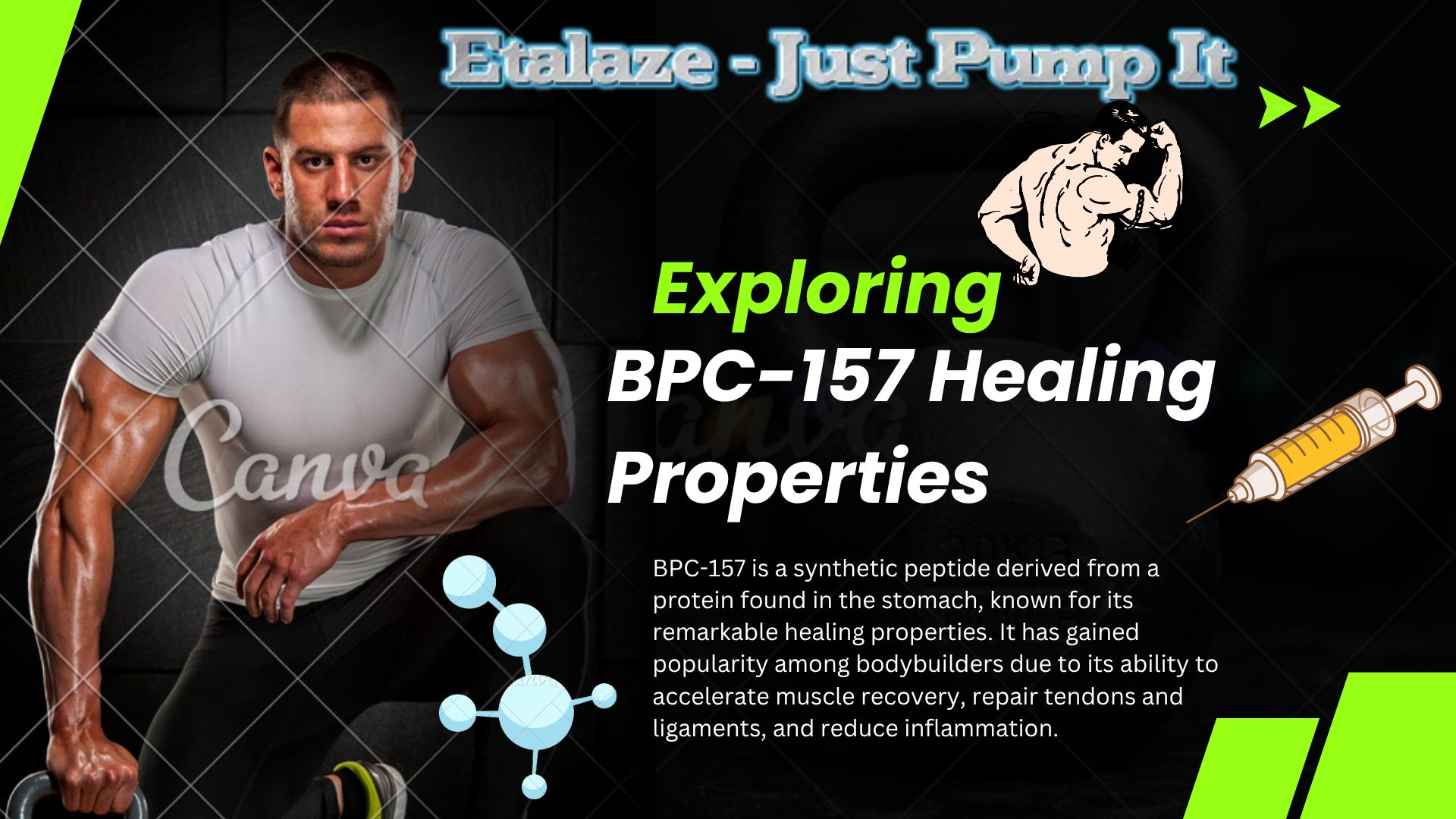
BPC-157 is a synthetic peptide derived from a protein found in the stomach, known for its remarkable healing properties. It has gained popularity among bodybuilders due to its ability to accelerate muscle recovery, repair tendons and ligaments, and reduce inflammation.
Key Benefits for Bodybuilders
Faster Recovery: Improves blood flow to damaged muscles, speeding up healing.
Injury Support: Strengthens connective tissues, reducing the risk of injuries.
Muscle Growth: Enhances collagen production, aiding in muscle repair and hypertrophy.
Pain Reduction: Has analgesic effects by elevating dopamine and serotonin levels.
Anti-Aging & Well-being: Supports tissue regeneration and overall health.
Must Read: New Arrival Workout Equipment on Amazon for the Disabled
How It Works
BPC-157 promotes angiogenesis, the formation of new blood vessels, which enhances nutrient delivery to injured tissues. It also blocks inhibitory growth factors, allowing for faster wound healing, especially in tendons.
Dosage & Usage
Most users take 200-400 mcg per day, typically in cycles of 4-6 weeks. It can be administered orally or via injection, with injections often preferred for localized healing.
Potential Risks Associated With BPC-157
BPC-157 is widely praised for its healing properties, but its long-term safety remains uncertain due to limited human studies. Here are some potential risks:
Possible Side Effects
Headaches – you may experience mild headaches, especially when first starting.
Injection Site Reactions – Swelling, redness, or irritation can occur if injected repeatedly in the same area.
Digestive Issues – Nausea or vomiting may happen, particularly with oral administration.
Fatigue & Lethargy – Some users experience temporary tiredness.
Blood Pressure Changes – BPC-157 may influence blood pressure, though effects vary.
Hot Flashes – Due to its impact on blood vessel dilation, some users report warmth or flushing.
Regulatory Concerns
Not FDA-Approved – BPC-157 is classified as an experimental peptide, meaning its safety profile is not fully established.
Limited Human Trials – Most studies focus on animal models, leaving gaps in understanding its effects on humans.
Buying BPC-157 Online
 Buy BPC 157 10mg by Magnus Pharma
Buy BPC 157 10mg by Magnus Pharma
There are multiple online outlets selling BPC-157, but the quality varies significantly. Some of the more frequently mentioned sources include Peptide Sciences and Canada Peptide, among others.
How to Assess Quality
Purity & Testing – Look for vendors that provide HPLC (High-Performance Liquid Chromatography) testing to confirm purity.
Reputation & Reviews – Check forums like Reddit’s Peptides community for user experiences.
Source & Manufacturing – Prefer vendors that source from reputable labs rather than unknown suppliers.
Packaging & Stability – Ensure proper lyophilized (freeze-dried) storage to maintain peptide integrity.
Customer Support & Transparency – Reliable vendors provide batch testing results and clear product descriptions.
Here are some recommended vendors for BPC-157 that align with bodybuilding goals:
1. Explicit Supps
Reputation: Well-known in the bodybuilding community.
Quality Assurance: Uses independent lab testing to ensure purity.
Customer Service: Strong support and fast shipping.
Pricing: Competitive rates without compromising quality.
2. Evolve Medical Group
Specialization: Offers peptide therapies tailored for muscle recovery.
Muscle Growth Focus: Provides expert guidance on BPC-157 usage.
Medical Backing: Works with professionals to ensure safe administration.
3. Elive Health & Wellness
Comprehensive Approach: Focuses on muscle recovery and performance.
Stacking Advice: Helps users combine BPC-157 with other peptides.
Consultation Services: Offers personalized peptide therapy.
BPC-157 Stacking Ideas
Stacking BPC-157 with other peptides can enhance recovery, muscle growth, and overall performance. Here are some effective combinations:
1. BPC-157 + TB-500 (Tissue Repair & Recovery)
- Why? TB-500 promotes cell migration and angiogenesis, complementing BPC-157’s healing effects.
- Best for: Tendon, ligament, and muscle injuries.
- Dosage: BPC-157 (250-500 mcg/day) + TB-500 (2-5 mg/week).
2. BPC-157 + CJC-1295 + Ipamorelin (Muscle Growth & Recovery)
- Why? CJC-1295 and Ipamorelin boost growth hormone release, accelerating muscle repair.
- Best for: Muscle hypertrophy and recovery post-training.
- Dosage: BPC-157 (250-500 mcg/day) + CJC-1295 (100 mcg/day) + Ipamorelin (100 mcg/day).
3. BPC-157 + GHK-Cu (Skin & Joint Health)
- Why? GHK-Cu enhances collagen production, improving skin and joint health.
- Best for: Joint pain, skin elasticity, and anti-aging.
- Dosage: BPC-157 (250-500 mcg/day) + GHK-Cu (2-5 mg/week).
4. BPC-157 + MK-677 (Recovery & Sleep Optimization)
- Why? MK-677 boosts IGF-1 and growth hormone, improving sleep and recovery.
- Best for: Deep recovery, muscle growth, and fat loss.
- Dosage: BPC-157 (250-500 mcg/day) + MK-677 (10-25 mg/day).
- 1. General Timing Guidelines
- Morning: Best for peptides that enhance metabolism and recovery (e.g., MK-677, CJC-1295).
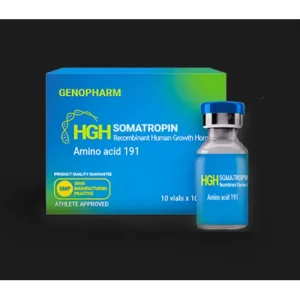 Click Here to Buy Genopharma HGH 100iu Kit
Click Here to Buy Genopharma HGH 100iu Kit
To maximize the benefits of BPC-157 and its stacked peptides, timing and cycling play a crucial role. Here’s how to structure your regimen effectively:
General Timing Guidelines
Morning: Best for peptides that enhance metabolism and recovery (e.g., MK-677, CJC-1295).
Pre-Workout: Ideal for peptides that boost performance (e.g., Ipamorelin).
Post-Workout: BPC-157 works best after training to accelerate muscle repair.
Before Bed: Peptides that stimulate growth hormone (e.g., CJC-1295 + Ipamorelin) should be taken 2 hours after the last meal.
Related Article: Tips on How to Store Peptides and HGH
Cycling Strategies
Standard Cycle: 4-6 weeks on, followed by 2-4 weeks off to prevent desensitization.
Advanced Recovery Cycle: 8-12 weeks on, followed by 4 weeks off for severe injuries.
Maintenance Cycle: 2-3 weeks on, followed by 1-2 weeks off for long-term joint health.
Example Stacking Schedule
| Peptide Stack | Timing | Cycle Length |
| BPC-157 + TB500 | Post workout | 6-8 Weeks |
| BPC-157 + CJC-1295 + Ipamorelin | Before bed | 4-6 Weeks |
| BPC-157 + MK-677 | Morning | 8-12 Weeks |
| BPC-157 + GHK-Cu | Evening | 6 Weeks |
Alternatives to BPC-157
Here are 10 alternatives to BPC-157 that offer similar benefits for healing and recovery:
Pentadeca Arginate (PDA) – A peptide structurally similar to BPC-157, with one amino acid substitution, showing promising results.
Thymosin Beta-4 (TB-500) – Known for its regenerative properties, particularly in tissue repair and inflammation reduction.
GHK-Cu (Copper Peptide) – Supports wound healing, collagen production, and anti-inflammatory effects.
Epitalon – A peptide that promotes cellular regeneration and longevity.
CJC-1295 + Ipamorelin – A combination that enhances growth hormone release, aiding recovery and muscle repair.
Selank – A neuropeptide with anti-inflammatory and healing properties.
LL-37 – An antimicrobial peptide that also supports tissue healing.
KPV Peptide – Known for its anti-inflammatory effects and gut healing potential.
Body’s Natural Healing Mechanisms – Traditional therapies like physical therapy, rehabilitation exercises, and anti-inflammatory medications can serve as alternatives.
BPC-157 Topical Formulations – Some skincare products include BPC-157, though their effectiveness is uncertain
Overall
BPC-157 has emerged as a powerful peptide for bodybuilders seeking accelerated recovery, muscle repair, and overall performance enhancement. Its ability to stimulate angiogenesis, collagen production, and anti-inflammatory pathways makes it a key player in injury prevention and rehabilitation. However, while anecdotal evidence and animal studies support its benefits, human trials remain limited, raising questions about its long-term safety. Choosing high-quality sources, optimizing stacking with complementary peptides like TB-500 or CJC-1295, and following structured cycling protocols can maximize its effectiveness while minimizing risks. As research continues, bodybuilders should balance its potential advantages with careful monitoring and informed decision-making to ensure safe and sustainable use. 
-
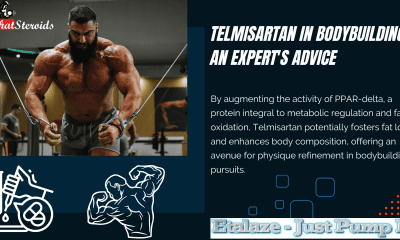
 Bodybuilding Products1 year ago
Bodybuilding Products1 year agoTelmisartan In Bodybuilding: An Expert’s Advice
-

 Nutrition2 years ago
Nutrition2 years agoEverything Nutritional Food: What’s Too Much Or Too Little
-
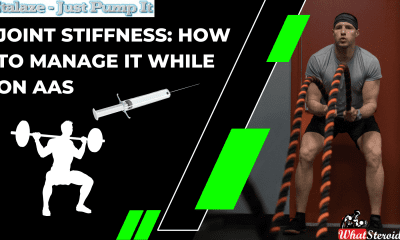
 Anabolic Steroids12 months ago
Anabolic Steroids12 months agoJoint Stiffness: How to Manage It While on AAS
-
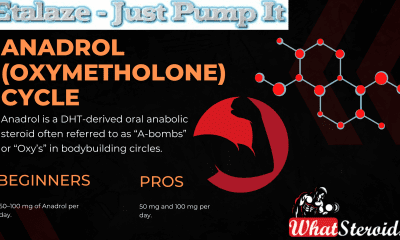
 Steroids1 year ago
Steroids1 year agoAnadrol Cycle: Benefits, Doses, Alternatives, etc.
-
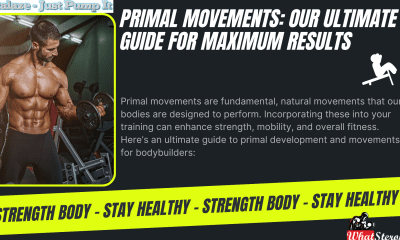
 Bodybuilding11 months ago
Bodybuilding11 months agoPrimal Movements: Our Ultimate Guide for Maximum Results
-

 Bodybuilding2 years ago
Bodybuilding2 years agoChia Seeds in A Bodybuilder’s Diet: An Expert’s Advice
-
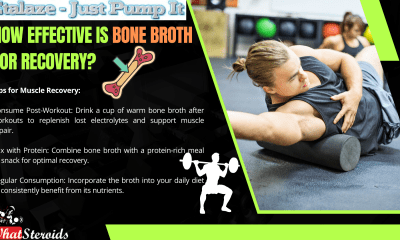
 Bodybuilding11 months ago
Bodybuilding11 months agoHow Effective is Bone Broth for Recovery?
-
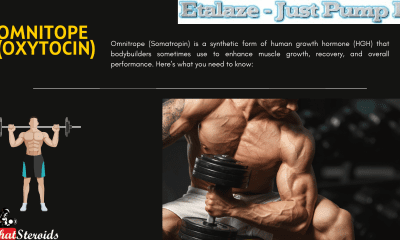
 Steroids1 year ago
Steroids1 year agoOmnitope (Oxytocin)
-
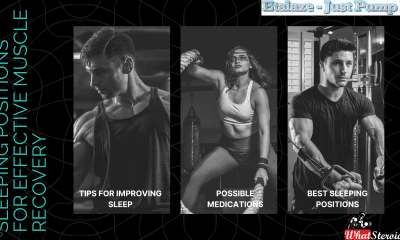
 Steroids12 months ago
Steroids12 months agoSleeping Positions for Effective Muscle Recovery
-

 Bodybuilding1 year ago
Bodybuilding1 year agoHow Much Is Too Much Cardio? Understanding Heart Rate Zones
-
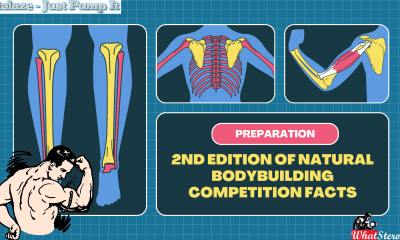
 Bodybuilding11 months ago
Bodybuilding11 months ago2nd Edition of Natural Bodybuilding Competition Facts
-

 Bodybuilding2 years ago
Bodybuilding2 years agoCalorie Dumping: A Bodybuilder’s Guide
-
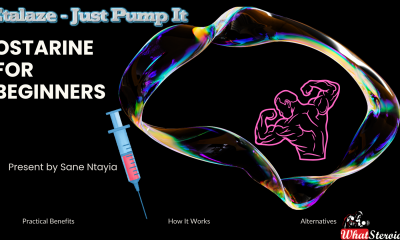
 Steroids7 months ago
Steroids7 months agoOstarine For Beginners: The Ultimate Guide
-
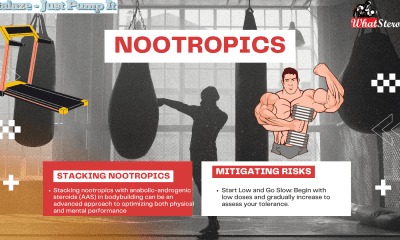
 Bodybuilding11 months ago
Bodybuilding11 months agoAre Nootropics a Better Option to AAS?
-
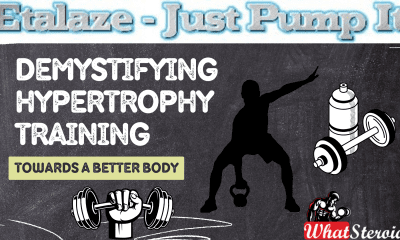
 Bodybuilding1 year ago
Bodybuilding1 year agoDemystifying Hypertrophy Training
-

 Steroids8 months ago
Steroids8 months agoBodybuilder Winter Clothing: Staying Warm and Stylish
-

 Bodybuilding8 months ago
Bodybuilding8 months agoTop Video Games for Bodybuilders in 2025
-
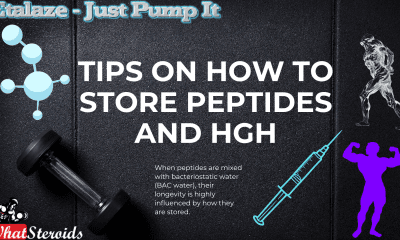
 Steroids6 months ago
Steroids6 months agoTips on How to Store Peptides and HGH
-
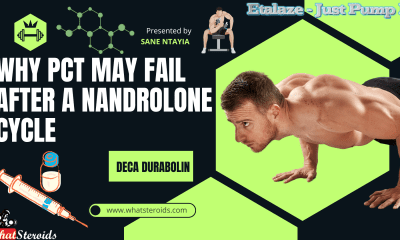
 Steroids5 months ago
Steroids5 months agoWhy Post-Cycle Therapy (PCT) Fails After a Nandrolone Cycle
-
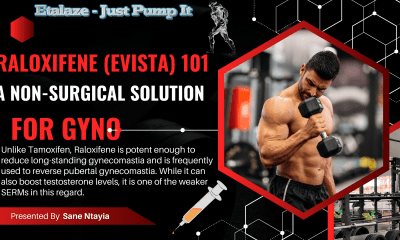
 Steroids4 months ago
Steroids4 months agoRaloxifene (Evista) 101: A Non-Surgical Solution for Gyno
-

 Beginners8 months ago
Beginners8 months ago14 Morning Run Safety Tips for Bodybuilding and Fitness
-
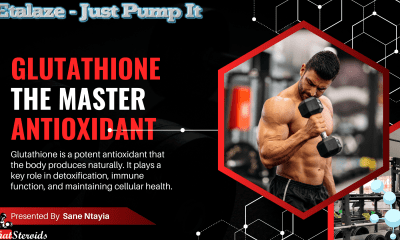
 Steroids7 months ago
Steroids7 months agoGlutathione – The Most Underrated Antioxidant
-

 Beginners2 years ago
Beginners2 years agoTren Cycle for Beginners
-
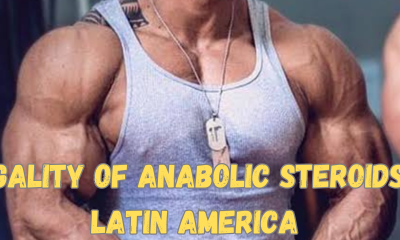
 Anabolic Steroids2 years ago
Anabolic Steroids2 years agoLegality of Anabolic Steroids In Latin America
-
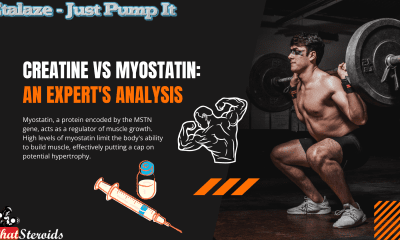
 Steroids4 months ago
Steroids4 months agoCreatine vs Myostatin: An Expert’s Analysis



